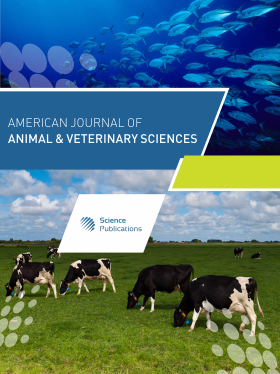Effect of Temperature Change and Estradiol Levels on Cattle Oocytes Developmental Competency: Comparing X-Sexed and Non-Sexed Sperm Following in vitro Fertilization
- 1 Department of Animal Sciences, Tshwane University of Technology, Faculty of Science, Private Bag X 680, Pretoria, South Africa
- 2 Agricultural Research Council, Animal Production, Germplasm Conservation and Reproductive Biotechnologies, Private Bag X2, Irene, South Africa
- 3 Department of Agriculture, Land Reform and Rural Development, Directorate: Farm Animal Genetic Resource, Private Bag X 250, Pretoria, South Africa
Abstract
The study aimed to investigate the effects of temperature change and estradiol (E2) hormone level on In Vitro Maturation (IVM) and fertilization of cattle oocytes using X-sexed and non-sexed sperm. In experiment 1: The oocytes were incubated at various temperatures of 35.5, 36.5, 37.5, 38.5, 39.5 and 40.5°C under similar conditions with 5% CO2, in humidified air for 22 h. In experiment 2: The IVM medium was supplemented with various concentrations of E2 (0, 0.1, 0.2, 0.3, 0.4 and 0.5 µg/mL). In experiment 3: The matured oocytes were fertilized in vitro using X-sexed and non-sexed frozen-thawed semen. An Analysis of Variance (ANOVA) was performed. Comparisons were considered significantly different at (p<0.05) level of significance using Fisher's protected least significant difference test. All the above analyses were performed using SAS 9.2 statistical software, for continuous variables, means and standard errors were employed. The highest percentages of oocyte Polar Body (PB) extrusion were found at 39.5 (63.5±6.22), 38.5 (58.9±5.64) and 37.5°C (54.0±3.68) and differ from other treatments group (p<0.05). The oocytes with the first PB extrusion at 0 (2.42±4.39), 0.1 (21.00±7.194), 0.4 (29.90±8.19) and the 0.5 µg/mL (23.40±9.85) revealed significant difference with 0.2 (46.70±14.68) and 0.3 µg/mL (47.30±11.05) concentrations. The presumptive zygotes fertilized using non-sexed sperm had higher fertilization, cleavage, and blastocyst rates compared to the X-sexed sperm. In conclusion, oocytes matured at 39.5°C revealed optimal oocyte PB percentage as compared to other treatments. Oocytes matured at 0.2 and 0.3 µg/mL of E2 revealed the optimal oocyte PB percentage at 39.5°C. Overall, presumptive zygotes produced at 0.2 and 0.3 µg/mL of E2 and fertilized using X-sexed sperm provide lower oocyte developmental competency at 39.5°C.
DOI: https://doi.org/10.3844/ajavsp.2023.304.316

- 3,714 Views
- 2,406 Downloads
- 0 Citations
Download
Keywords
- Maturation
- Cumulus Cells Expansion
- Polar Body
- Cleavage
